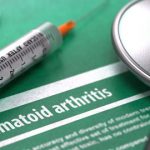The observation that detectable drug concentrations were measured in many of the samples is reason to pause and ask: What is the clinical significance of this finding?
The concentration ratio of TNF inhibitors in cord blood to maternal blood ranged from 0.01 to 0.062, depending on the agent, suggesting very low levels of transfer. The clinical significance of these levels of anti-TNF agents may not be fully established, but we have plenty of evidence to suggest the levels are safe. Studies have shown concentrations of 0.1 μg/mL can bind all circulating TNF, suggesting this level as a cutoff value for clinically relevant concentrations.3
Infants born to mothers on anti-TNF therapy have been studied more extensively in inflammatory bowel disease (IBD) literature. Those studies have shown the use of biologic therapy during pregnancy does not affect infant response to vaccines or achievement of developmental milestones, or increase the risk of infection.4-6
Certolizumab is the anti-TNF treatment we all know and love because it’s safe during pregnancy. It’s known for its unique lack of immunoglobulin G (IgG) fragment crystallizable (Fc) region, which keeps it from binding to the placental Fc receptor and, thus, is not transferred across the placenta from mother to fetus.7 But what about etanercept? Previous studies suggest some transplacental transport via antibody Fc fragment, but our base article suggests a lack of significant placental transfer.8 Along with evidence suggesting little, if any, placental transfer during pregnancy when stopped prior to 30 weeks of gestation, this finding may elicit a stronger support for use of etanercept throughout pregnancy.
The ACR guideline is notably less specific than EULAR, grouping most TNF inhibitors—other than certolizumab—together into the same category, with the conditional recommendation to continue these treatments during the first and second trimesters and discontinue during the third trimester, several half-lives prior to delivery.9 Guidelines for pregnant patients with IBD on biologic therapy recommend continuing biologics throughout pregnancy without interruption.10 Instead of discontinuing therapy, providers typically adjust the final dosing prior to delivery to achieve a low estimated trough because this is associated with lower adverse pregnancy outcomes for both mother and baby.
Implications
The implications of this study for patients cannot be overstated. In this unique circumstance, in which providers are taking care of both the mother and baby, every decision matters. These results can help providers make specific, patient-centered recommendations for their patients when it comes to the use of TNF inhibitors during pregnancy. The methods used in this study serve as an example of how to further examine transference of biologics and other drugs from mother to fetus.



